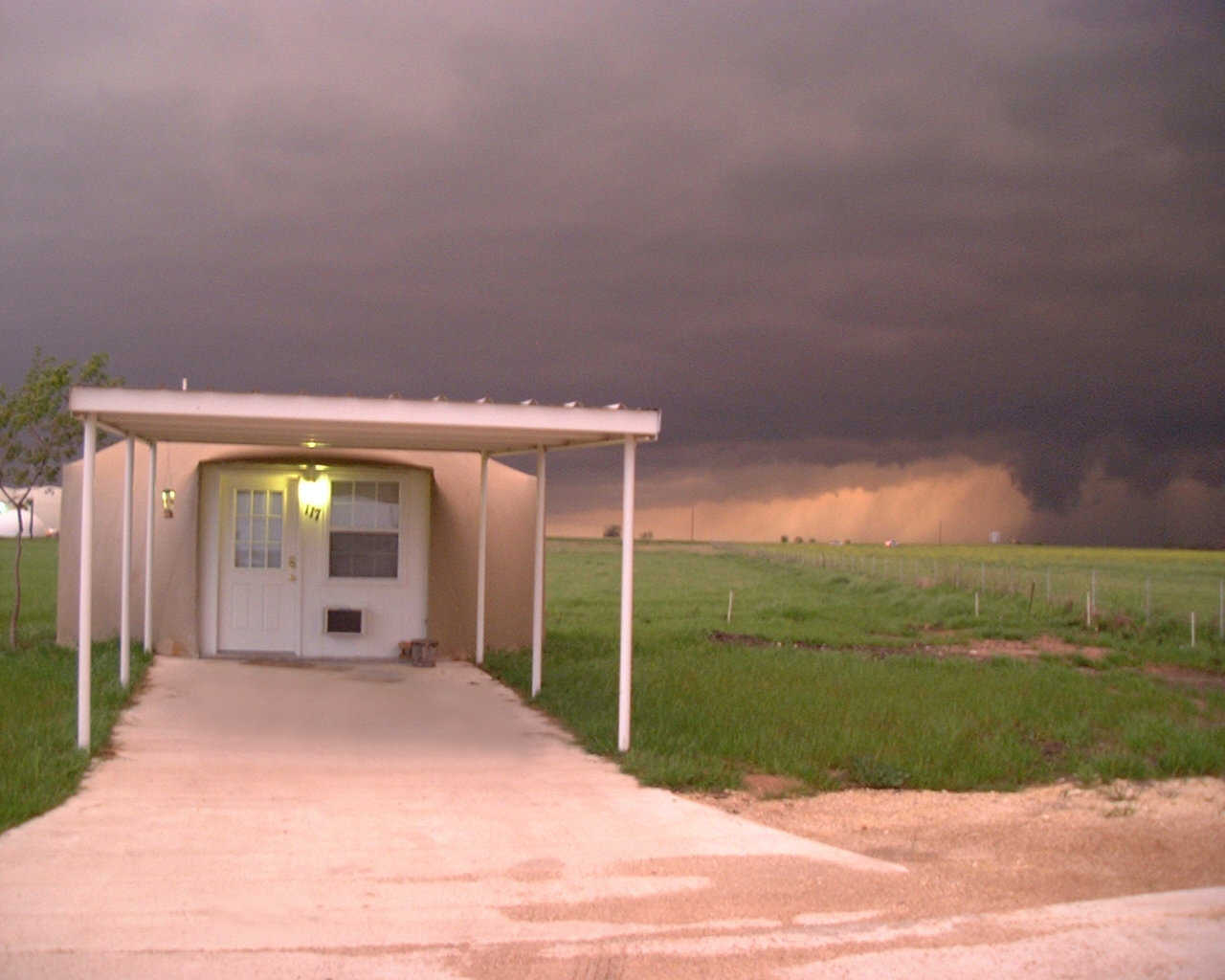
Monolithic Dome Rental in Italy, Texas — This Rental Unit provides secure, quiet, clean and affordable living accommodations even when an approaching storm darkens the skies.
Design Advantages of the Monolithic Dome
Advantages
Savings: There is no such thing as a free lunch, but the Monolithic Dome comes close. The original cost of a Monolithic Dome is generally less than that of a similar- size conventional building. Often it is much less.
Then there is cost recovery. Generally, over a period of twenty years, savings in energy costs equal the full cost of a Monolithic Dome facility. So in effect, it becomes free.
Examples: In 1984, Maranatha Church of Mount Belvieu, Texas built two Monolithic Domes: 208′ × 48′ and 60′ × 25′. As compared to neighboring, similar-size churches, in energy savings Maranatha recovered their complete construction costs in just thirteen years.
A Monolithic Dome school facility estimated its cost recovery took fourteen years, as compared to an old school that burned. According to reports we get, most figure less than twenty years.
Now let’s calculate the cost of the dome based on its lifespan. If you divide the dome’s cost by the number of years in its lifespan, you get a very small number. With minimal maintenance, a Monolithic Dome will last several centuries, and that significantly reduces its per annum cost. Couple that with the energy savings and a Monolithic Dome compared to a conventional structure becomes virtually free.
Longevity: We call Rome’s Pantheon a Monolithic Dome’s oldest cousin. The Pantheon will be two thousand years old in 2126. That is not a unique longevity for a concrete dome. It can survive neglect and last for centuries.
Concrete is a super, long-lasting material. We can actually measure its growing strength for approximately twenty-five years. Generally, that strength can only be compromised if the concrete is polluted during the mixing process.
Again, look at the Pantheon. Its concrete was vastly inferior to our modern Portland cement concrete, but it’s still here and going strong.
Now look at our modern concrete roads and bridges and the abuse they take. On a daily basis, many are traversed by heavy trucks and equipment, and in icy weather they’re covered with salt. Those roads and bridges are built of concrete because concrete can better endure the abuse than can steel or wood.
In addition to reinforced concrete, Monolithic Domes have thick layers of polyurethane foam. The Army Corp of Engineers has determined that urethane foam kept out of sunshine has no known lifetime. In other words, like concrete, foam is virtually forever.
Serenity: Monolithic Domes are quiet. Only a very small amount of outside sound penetrates a Monolithic Dome. Pastors find that shutting off the noise of the world outside is wonderful. Cars, trucks, buses and planes ceased to exist for worshipers inside the dome.
Serenity is the prevailing feeling in a Monolithic Dome. Churches feel holier. Schools feel more secure. Homes feel more comfortable. That’s the quiet, peaceful, safe feeling most people experience inside a Monolithic Dome.
In 1975 I experienced this serenity in the first Monolithic Dome home we built for my mother in Menan, Idaho. We had recently finished it when a local architect asked to see it. But he had two appointments and was in a hurry. So we walked through the house and upstairs into a large, cozily furnished, single-room loft. We sat down and started talking. Twenty minutes later, he borrowed the phone and canceled his appointment. In another thirty minutes, he borrowed the phone again and canceled his second appointment. That and similar experiences taught me never to let guests sit down in that loft sanctuary if I was unprepared for a long stay. Its cozy, serene feeling was almost overwhelming.
Twenty-one years later I moved my operation to Italy, Texas. Shortly after we built our first model home in Italy, we had an interesting experience with a couple who came to see it. After they wandered around for a bit, the wife approached her husband and said,“Honey, if you build me this, you can go.”
That remark absolutely flabbergasted me, and I asked her to explain. She said her husband loved to work in Egypt and would be gone six months at a time, leaving her terrified to be alone. But she said that the Monolithic Dome home made her feel safe and serene.
Still amazed by her reaction, I continued questioning her. I wanted to know what it was about the dome that made her feel serene. After all, the dome was not impenetrable; it had windows and a glass insert in the door, all of which could be broken. Knowing that, she said the dome still made her feel serene and safe, but she couldn’t explain how or why.
Since that discussion in 1991, I have asked many people, “How do you feel in a Monolithic Dome?” Many say they experience a feeling of serenity and peace that they don’t get in a conventional home.
Is it the roundness? Maybe! One lady said she felt wrapped, as if sheltering arms surrounded her. Some people think that its serenity comes from its quiet. The outside world’s noise does not penetrate the inside quiet of a Monolithic Dome.
This feeling of serenity has also been pointed out to me by pastors of Monolithic Dome churches. And school teachers make some of the same remarks. They say that their students enjoy the dome’s serenity and lack of outside sounds. Bruce Klaehn, Superintendent of Grand Meadow, Minnesota ISD, credited the dome’s openness and high ceilings for the feeling of serenity his students expressed.
Safety: Monolithic Domes are safe and secure. Fire, earthquake, tornadoes, and hurricanes pose very little danger to their occupants. Forty domes in the path of Katrina pointedly provided proof of structural superiority.
New Life Family Church, a Monolithic Dome facility built twenty years ago in Biloxi, Mississippi, was hard hit by Katrina. But the morning after, parishioners removed the wet carpet and readied the structure for use as a hurricane relief center. Because of Katrina, which leveled many of its neighboring buildings, New Life Family Church became Biloxi’s second tallest building.
In Pensacola Beach, Florida in 2004, officials allowed an NBC news crew to remain in Dome of a Home during Hurricane Ivan. The news crew observed and reported on Ivan while in this Monolithic Dome that survived this horrific hurricane admirably.
Sullivans Island, South Carolina has a hurricane history. When a hurricane warning is issued, all of the island is ordered to evacuate except for two Monolithic Domes and two World War II military bunkers.
The technology and the materials used in their construction enable Monolithic Domes to provide what FEMA calls “near-absolute protection” from natural disasters. That means that a Monolithic Dome, whether it’s a home, school, church or whatever, can survive severe wind storms, tornadoes, hurricanes and earthquakes while protecting its inhabitants from such calamities.
Obviously the dome’s windows can be broken, and domes built in low places can fill with water. But the structure itself is certainly safer than most other types of construction.
Monolithic Cabins
Since they’re designed to be loaded on trucks and transported, Monolithic Cabins do not have the concrete thickness of Monolithic Domes. Nevertheless, Monolithic Cabins are stronger than any cabin presently being built.
They have curved shapes, so wind doesn’t have much of a tug on them. Then too, Monolithic Cabins can be reinforced with an additional two inches of concrete to make them as tornado-safe as a Monolithic Dome. And those slated for a hurricane area, can be provided with hurricane-rated windows and doors.
We do not know of any other way to make a safe building at an affordable price.
Decisions
Decide to like the dome or not. If you don’t like the dome, don’t build it. A Monolithic Dome has many advantages, but none matter if an owner doesn’t want a dome.
Buying a Monolithic Dome and then attempting to mix and match it with conventional construction can be, and has been, disastrous. One of the first big churches we built was in Indiana. Its architect was embarrassed to use a dome. With the owner’s approval, the architect designed a Monolithic Dome hidden by a surrounding conventional building. In the years that followed, the dome performed flawlessly, but the conventional structure began suffering from the many problems conventional buildings often develop. Its flat roof leaked, so lawsuits were filed against the general contractor. And heating bills for the facility’s conventional sections were more than eight times those of the dome.
It’s impossible for a conventional building to provide the energy savings of a Monolithic Dome. A conventional building cannot be sealed like a dome can. Even if such a structure is sprayed with three inches of urethane, it will not have a Monolithic Dome’s huge thermal battery.
In Monolithic Dome construction, urethane foam blankets the exterior of the concrete. That turns the concrete into the dome’s thermal battery. The combination of the urethane on the exterior and the thermal battery of the concrete more than doubles the energy efficiency of a Monolithic Dome.
The dome’s roof is the major part of the thermal battery, so the underside of that roof must always be involved with the HVAC system. Any HVAC engineer who isolates the roof eliminates much of the available energy savings.
At times, architects hire HVAC engineers who do not understand or won’t listen to what we try to teach. Those engineers usually order three to four times too much equipment and often isolate the thermal battery. In such a situation, we can guarantee that energy savings will be severely compromised.
One such church, a large facility in Louisiana, has reported that its HVAC systems turns on and off very often; consequently, at least half of its savings are lost. For most months, the demand charges are more than the run charges. Nevertheless that church still has a much more efficient building than other churches near them.
Until recently, measuring a Monolithic Dome’s energy efficiency has been a problem. But now that measuring can be done with a computer program called HEED, developed by UCLA. The HEED program considers the thermal characteristics of the insulation and not just R Values.
This is clearly demonstrated by the use of thermographs. These show the energy efficiency of a structure. For further proof, you need only check with owners or administrators of Monolithic Domes, who will tell you the domes are doing precisely what we are talking about here.
Other Parameters for Decisions
Always remember that the underside of a Monolithic Dome’s roof works as a the major part of the dome’s thermal battery. If a building has a floor area of 2000 square feet, that battery will measure about 2000 square feet. Thus, we have one square foot of battery per square foot of floor area. If a second floor is installed, the battery is automatically cut in half: 1/2 square foot of battery for each square foot of floor area.
Nevertheless where land is expensive or not available, multiple stories may be necessary and/or desirable. The Monolithic technology will still be useful and generally preferred.
Other than losing some of the battery’s advantages, there is no harm done if the building is not used for mass occupancy. But if it is for mass occupancy, such as a church sanctuary, the loss may be larger or may necessitate more HVAC equipment. In general, we like to see single-story buildings. Then too, single stories have other advantages, such as no need for elevators or double stairs.
Consider multiple domes. A Monolithic Dome’s energy efficiency is high; consequently, it really does not matter if you use ten buildings or one building to provide 30,000 square feet. Often multiple buildings eliminate the need for many interior partitions, sound partitions, other expensive interior finishes and equipment. The need for expensive halls is often reduced or eliminated.
Multiple domes also make sense from a construction standpoint. If planned right, domes can be added as funds are procured and needs are encountered. This is a real plus, not often available with conventional designs. Generally, when more space in needed, conventional buildings are enlarged; consequently, so is the surface area exposed to weather.
Designing a Monolithic Dome with or without a stemwall may not be an easy decision. There are many issues: Using a stemwall is probably wise for a building with many doors and windows. But if the building is primarily for seating, a stemwall usually is not needed. Generally, a stemwall costs more than a design that brings the dome to the ground. This often provides a lot of nearly free space. So the stemwall decision should be made after considering all alternatives.
True – the dome with a stemwall will look more conventional, and in many situations it’s the best compromise. But never give up on alternatives. A fence or wall circumnavigating the dome can be designed to look like a stemwall, yet serve as an attractive, concealed storage area or drainage way.
Properly landscaped, a Monolithic Dome with or without a stemwall will look attractive and serve well. Today we have many design elements that stand alone and are not terribly expensive, but really enhance a structure. Demand some of them.
Selecting the Design/Build Team
Designers are an important, integral part of any construction. But they need experience. Obviously an architect or designer whose professionalism includes successful projects is an ace in the hole. But sometimes new architects want to try their hands. This works well with novices willing to learn from the experts at the Monolithic Dome Institute and utilize their experience.
On the other hand, a newcomer who does a runaway by neglecting to use traits and techniques of Monolithic Dome construction can, and usually does, create problems. In all likelihood, the resulting building will not be as energy efficient, nor will it generate possible energy savings.
The builder should also be experienced. Most experienced Monolithic Dome builders are members of the Monolithic Dome Institute.
For privately owned projects, an architect and builder often work as a team. But for public projects, the architect generally does the design, and the construction goes to the lowest bidder. The team approach is better. It is referred to as design/build.
Originally published May 2009, updated December 2011
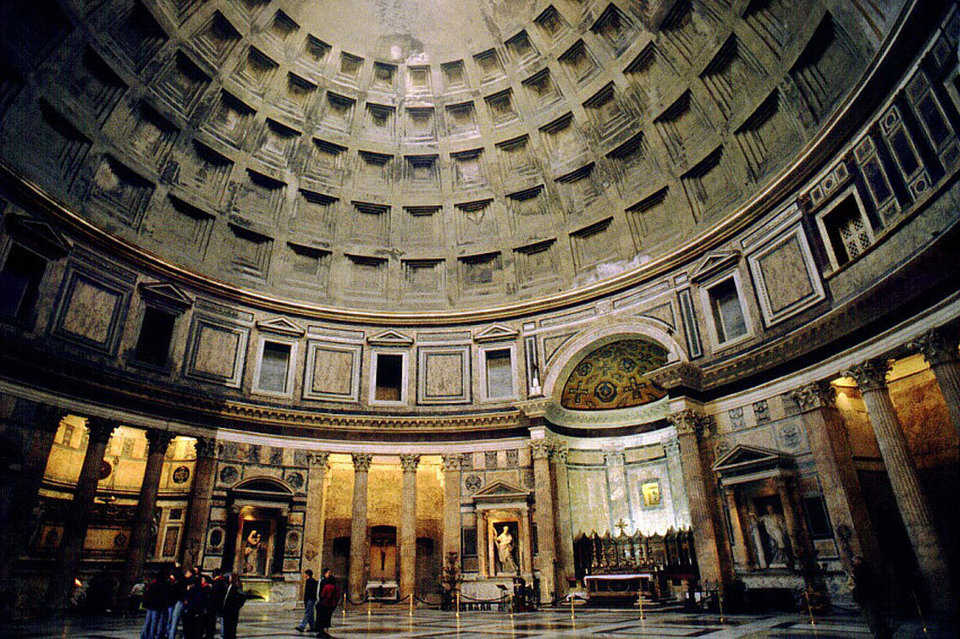
The Pantheon in Rome, Italy — Originally built as a temple to all the gods of Ancient Rome, the Pantheon was redesigned by Emperor Hadrian’s architects in about 126 AD. It has lasted beautifully for many centuries and proven its “foreverness.”
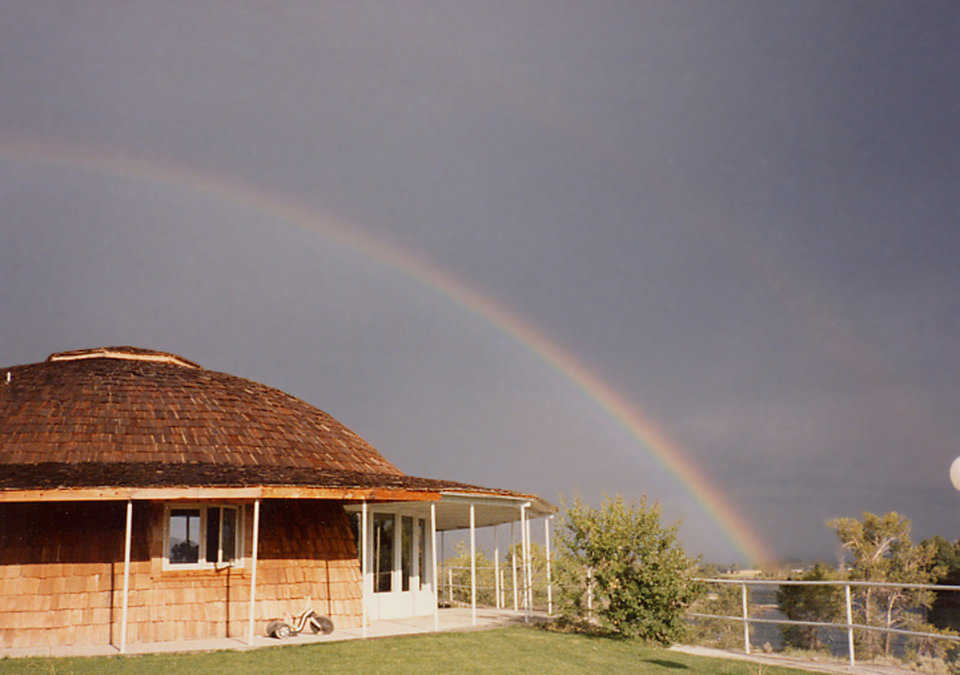
Crandall home, Menan, Idaho — After a storm the occupants of this Monolithic Dome home barely noticed, a rainbow appeared. Folks who live in Monolithic Domes tell us that storms simply do not bother them. One lady said, “If I hadn’t looked out the window, I wouldn’t have known we were having a storm.”
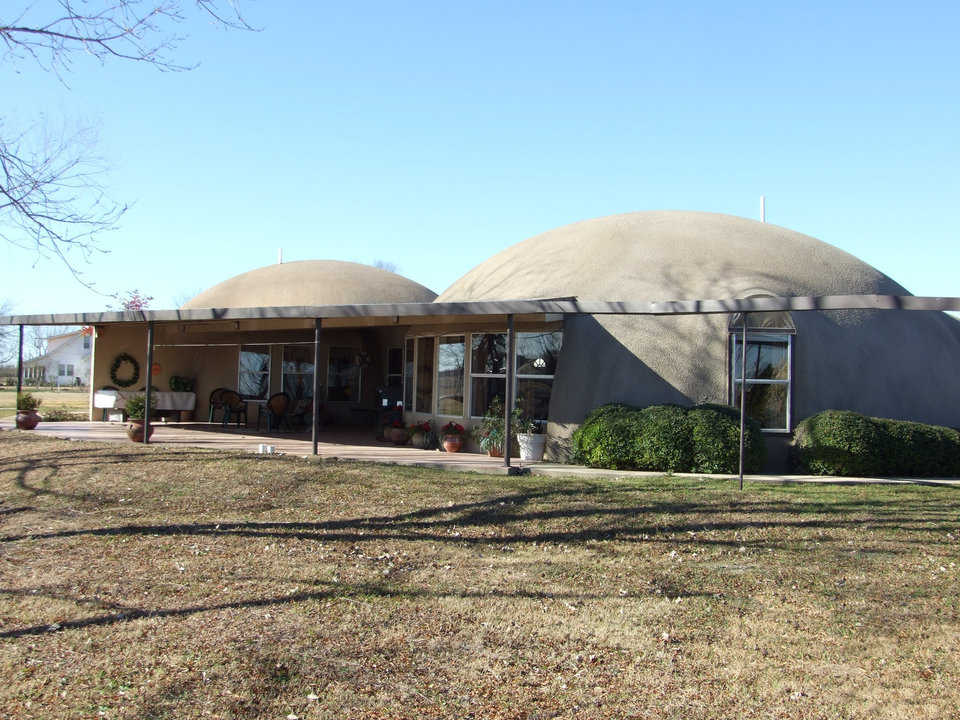
Charca Casa in Italy, Texas — Judy and David South’s home, Charca Casa, was designed and constructed as a duplex of two connected domes, each with a diameter of 40 feet. Since its construction in 1994, Charca Casa has beautifully survived several horrific, typically Texas wind storms and twisters.
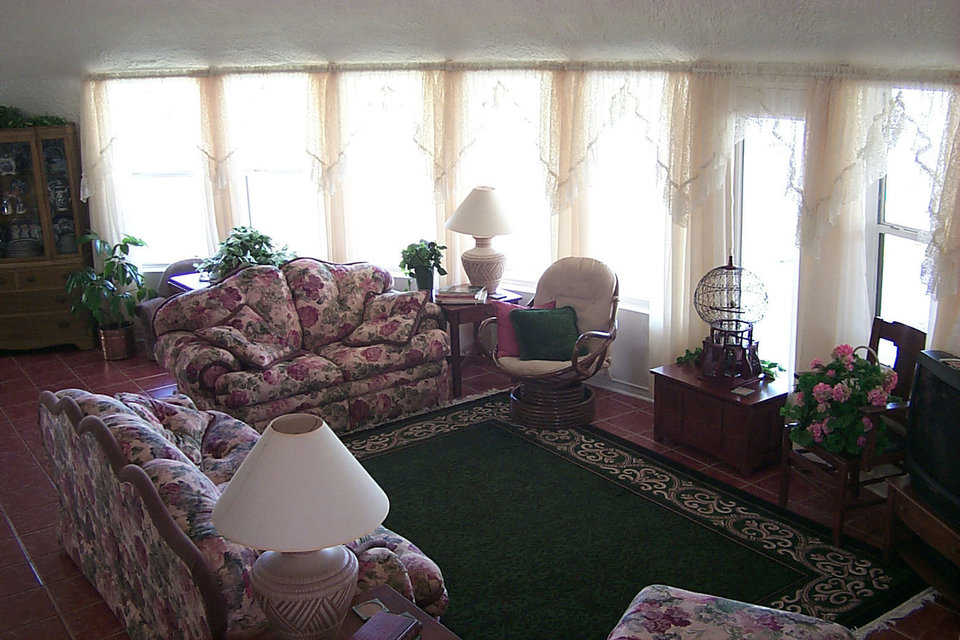
Spacious great room — A wall of windows in Charca Casa’s great room provides light and a view of the patio and pond. This home inspires a feeling of serenity — one that visitors often notice as soon as they enter.
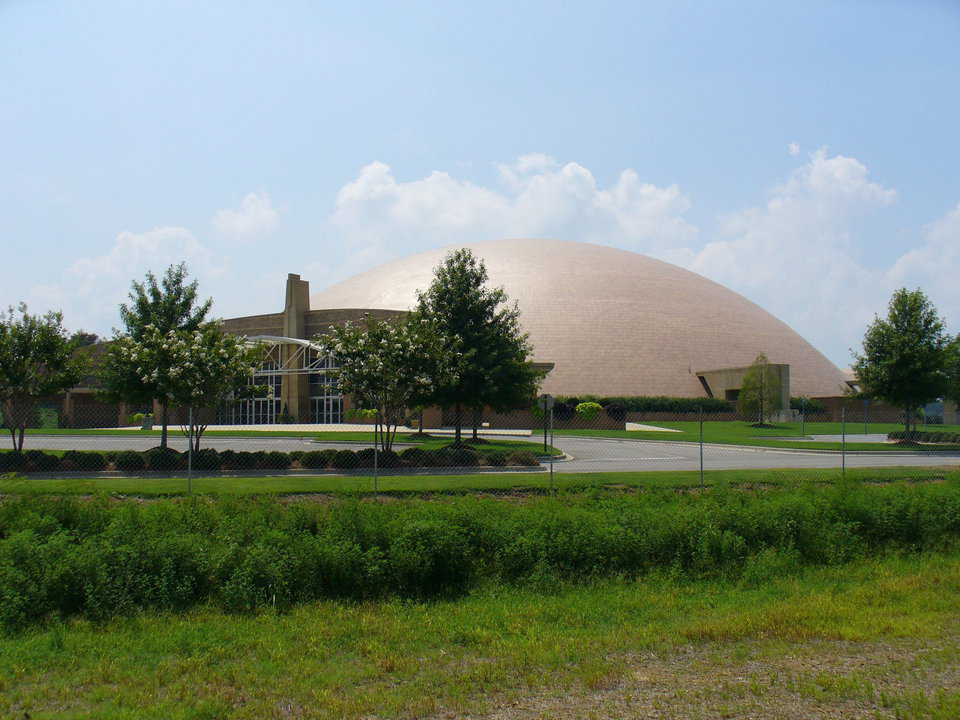
Faith Chapel Christian Center — Built in 2000 in Birmingham, Alabama, Faith Chapel Christian Center has a diameter of 280 feet, seating for 3000 and an interior area of 61,575 square feet. Both pastor and congregation wanted Monolithic Domes because of their disaster resistance, strength and durability.
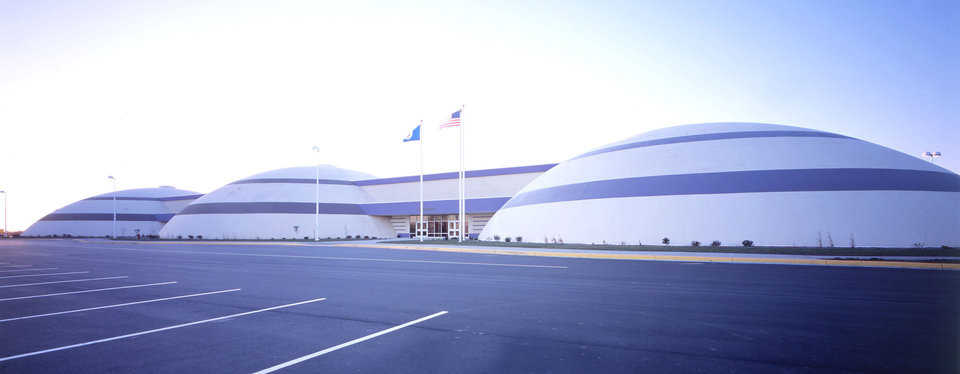
Grand Meadow School, Minnesota — Grand Meadow’s Superintendent Bruce Klaehn told parents, “This will be the safest building for your children to be in. We’ll be in a community where school is the building you want your children in, not where you want to get them out of.”
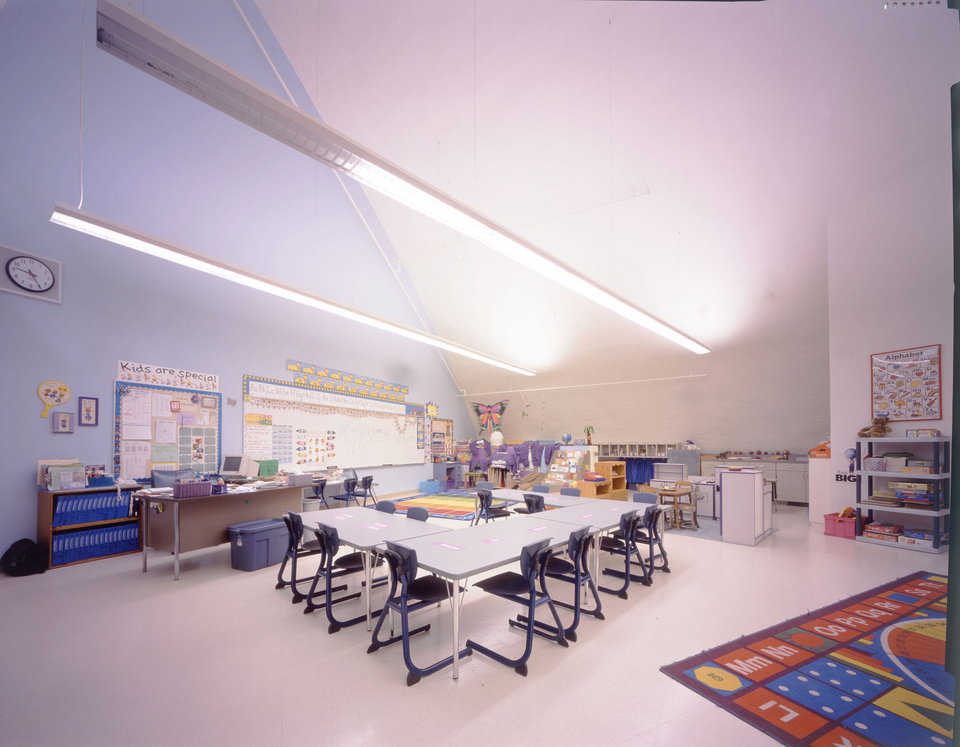
Classroom at Grand Meadow — The school district received plan approval and a grant from its state legislature for the construction of Grand Meadow’s five Monolithic Domes partly because of the domes’ ability to provide near-absolute disaster protection.
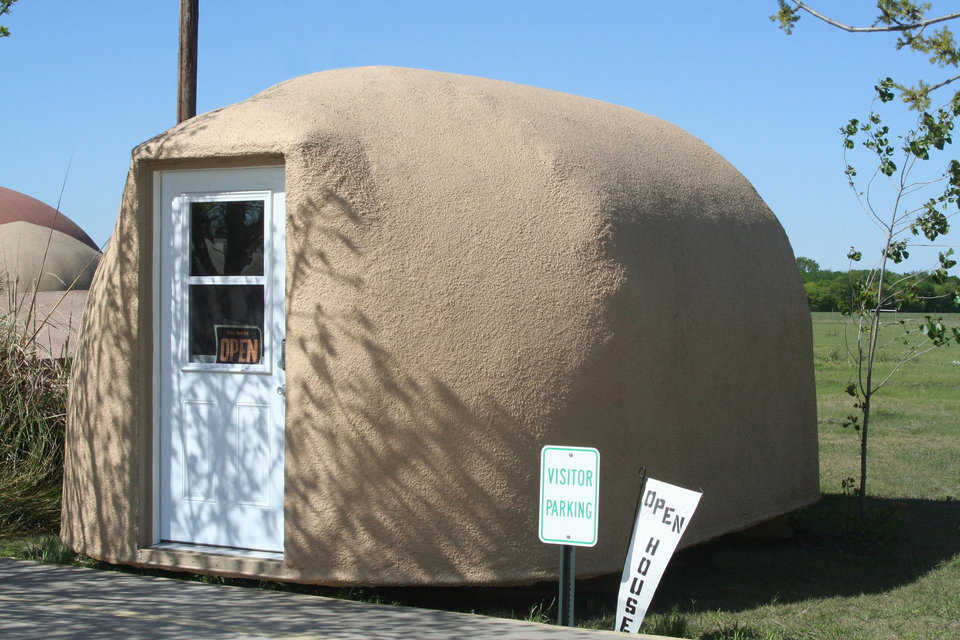
A Monolithic Cabin, Model 201 — Although small, this transportable Monolithic Cabin, like a Monolithic Dome, is disaster resistant, ultra energy-efficient, low maintenance and long lasting. Those qualities make it very cost effective — about as close to free as you can get.

Inside a Monolithic Cabin — A safe, affordable Monolithic Cabin is available with a living area of 150, 201 or 266 square feet.
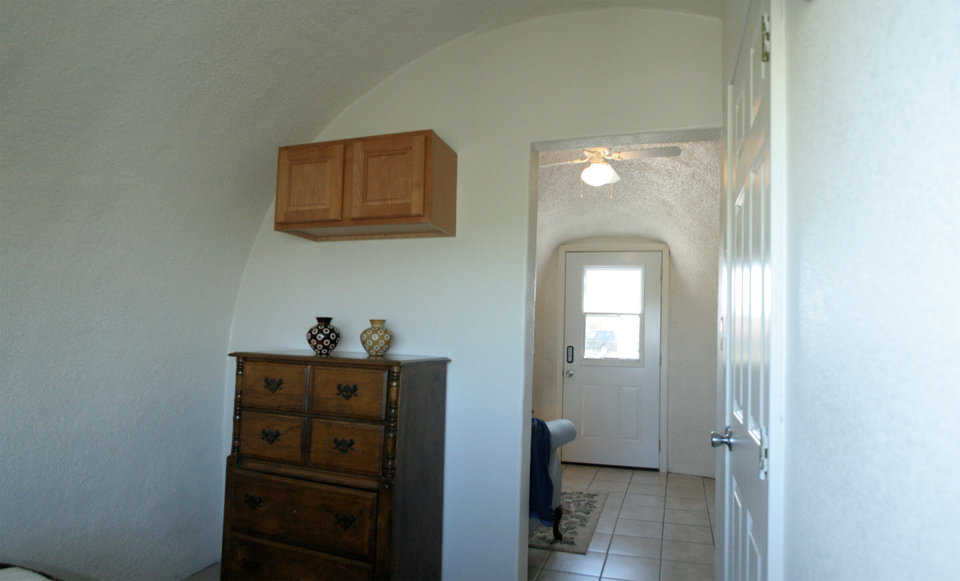
Bedroom in Monolithic Cabin — With a weight of 9 to 14 tons, a Monolithic Cabin can be trucked or barged to virtually any location and set up on virtually any site.
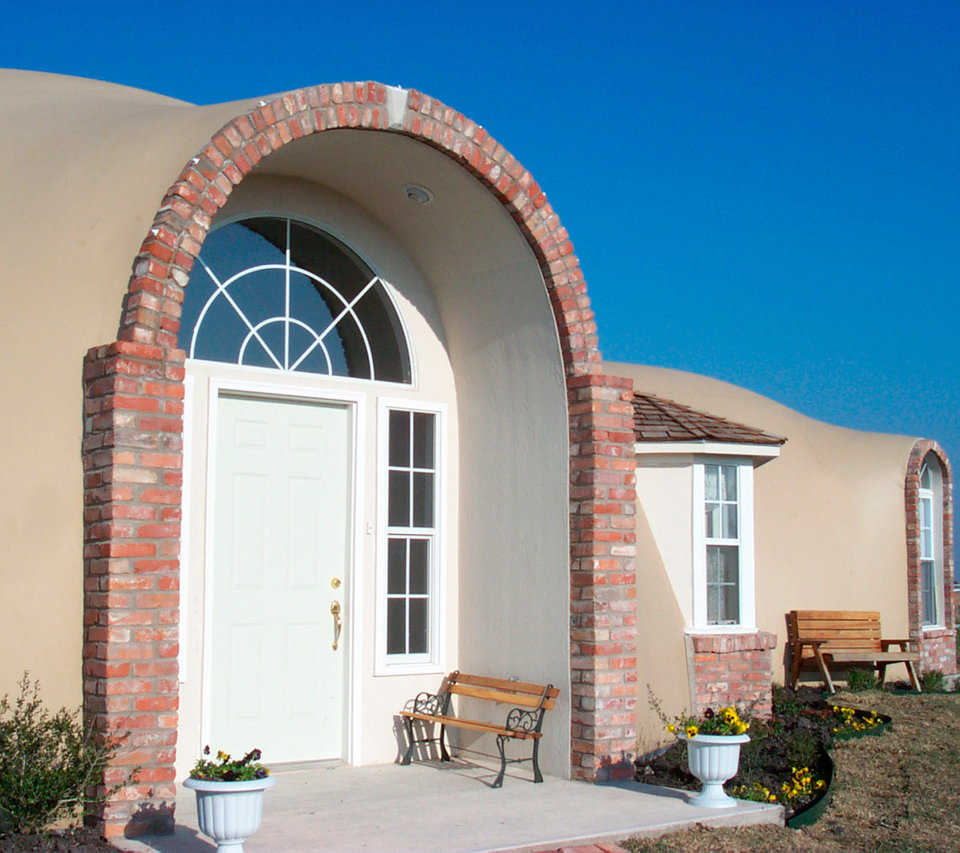
Shamrock Chateau — Marilee and Larry Byrne’s Monolithic Dome dream home, Shamrock Chateau consists of three interconnected domes that provide 2660 square feet of super-insulated, energy efficient living space.
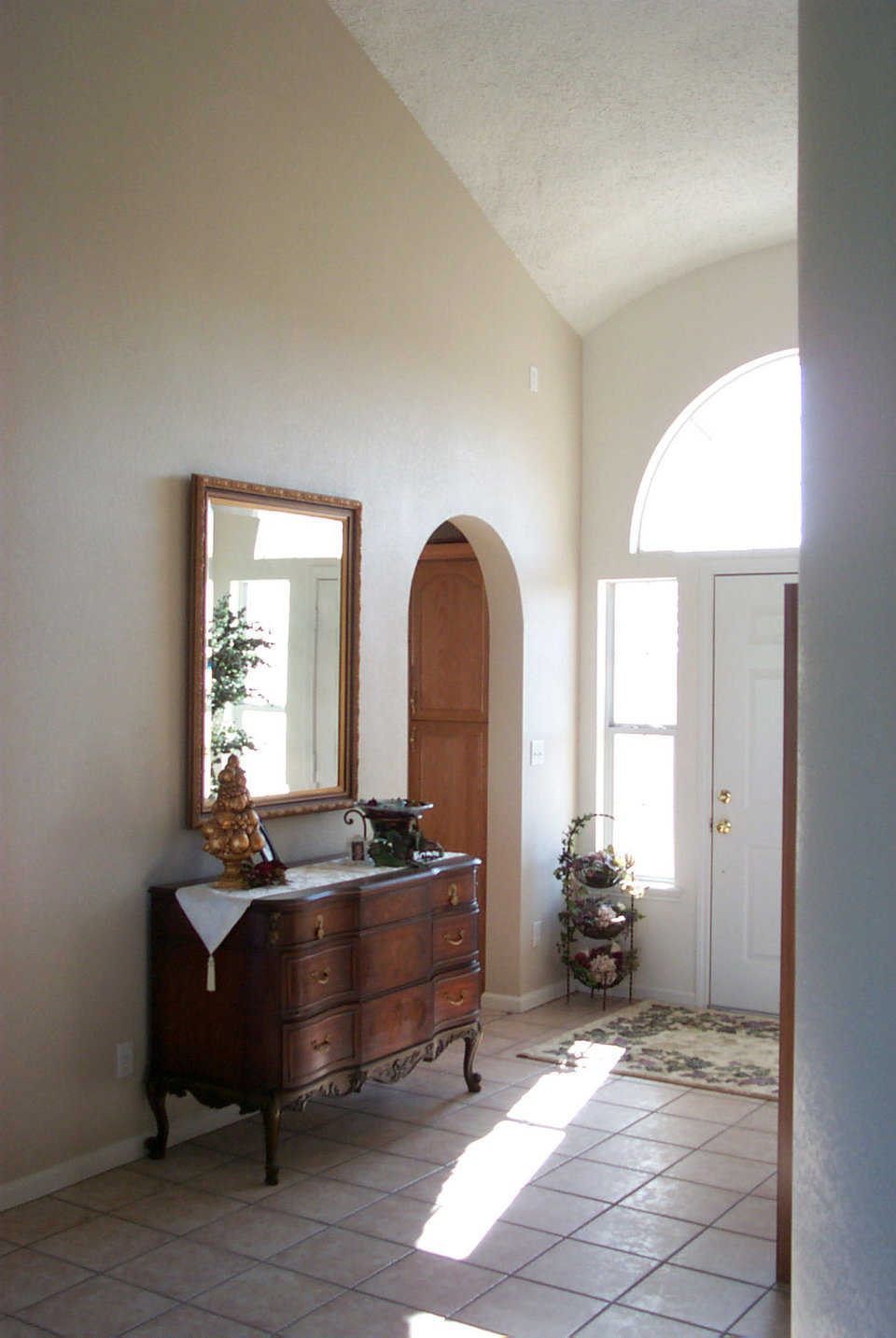
A welcoming foyer — Shamrock Chateau’s foyer opens into a gracious, safe home, designed to last for centuries and to be passed down to the generations that follow.
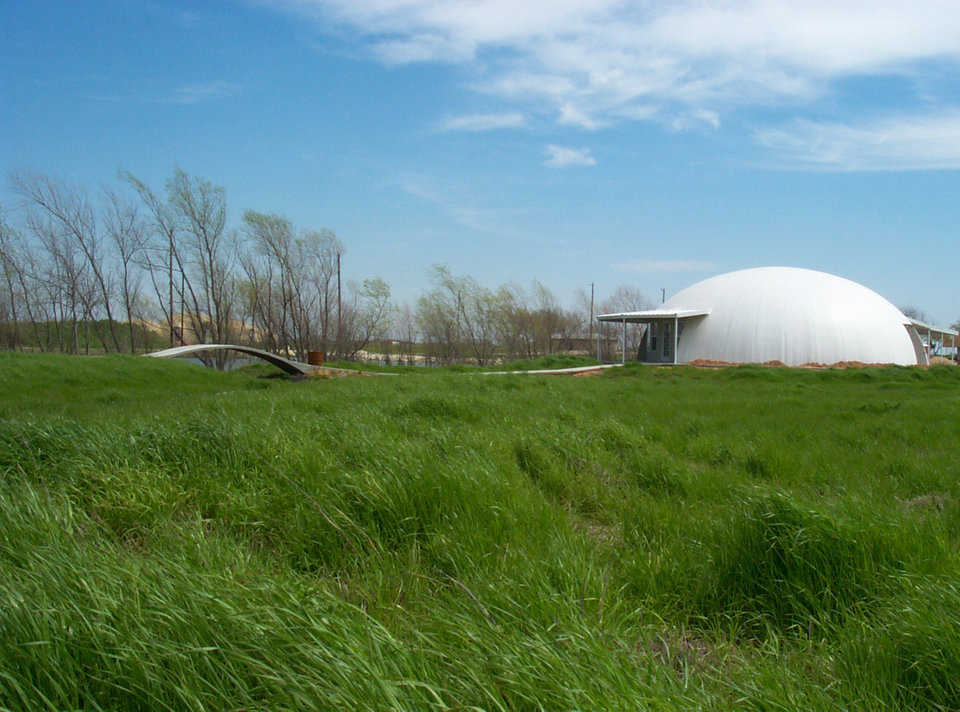
The Callisto in Italy, Texas — In 2008, Callisto’s monthly utility bill for an all-electric dome inhabited by an active family of six averaged just $330. And that included power for running the septic system and air-conditioning a dome shed.